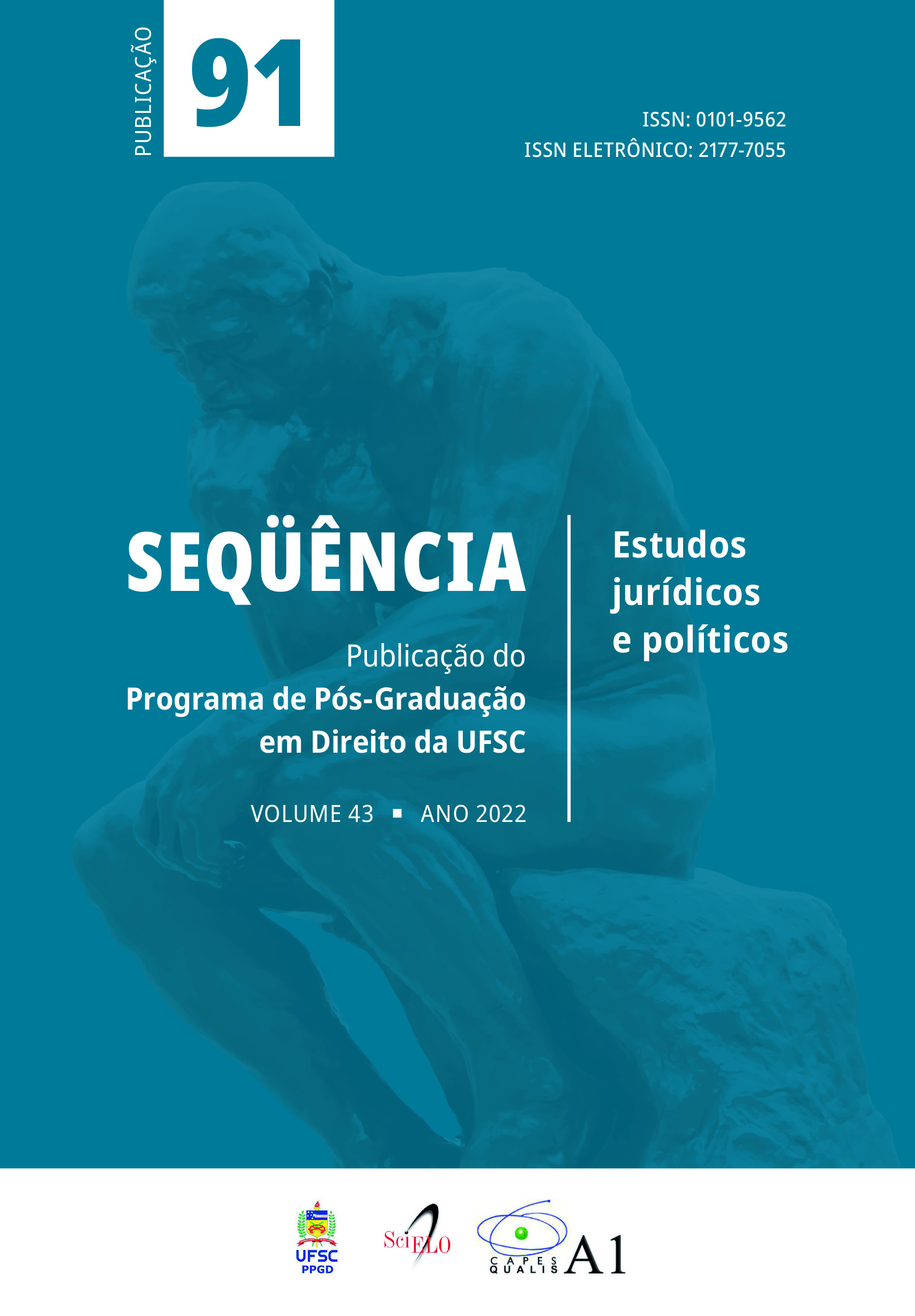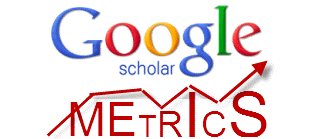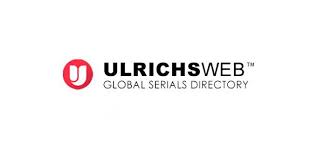Factors related to sugar consumption by young people in Portugal: public policies and nutritional literacy
DOI:
https://doi.org/10.5007/2177-7055.2022.e91341Keywords:
Public policies on healthy eating, Fiscal Policies, Health LiteracyAbstract
To reduce the burden of diet-related non-communicable diseases, promoting healthy eating habits has become a concern of modern societies. In this vein, in addition to trying to improve the health literacy of its population, the Portuguese authorities have recently levied taxes on food products that are deleterious to health. Despite the young exhibiting better health literacy, they also tend to overconsume these products. This research analyses the influence of public policies on healthy eating and of health literacy on the health management of young adults. We applied an online survey to young adults who were attending a university degree at Universidade de Lisboa. The collected data were processed by statistical analysis, using SPSS software. Although most of the young respondents recognize their importance in managing their individual health, a large majority are unaware of the public policies in place and frequently over consume sugar. Public policies on healthy eating thus need to reconsider the role of young people as agents of participation, promoting knowledge about the measures and providing them with tools to manage their own health.
References
Aizega Zubillaga, J. M. 2000. La utilización extrafiscal de los tributos y los princípios de justicia tributaria. Servicio Editorial de la Universidad del País Vasco.
Albaladejo, G. (2014). Introducción al estudio teórico y práctico de las políticas públicas. In G. Albaladejo (Ed.)., Teoria y Práctica de las Políticas Públicas. Valencia: Tirant lo Blanch.
Alcázar, M. (2000). Curso de Ciencia de la Administratión. Tecnos.
Alemanno, A., & Carreño, I. (2011). Fat taxes in the EU between fiscal austerity and the fight against obesity. European Journal of Risk Regulation, 2(4), 571-576.
Anderson, S. P., de Palma, A., & Kreider, B. (2001). Tax incidence in differentiated product oligopoly. Journal of Public Economics, 81(2), 173–192.
Andreyeva, T., Chaloupka, F. J., & Brownell, K. (2011). Estimating the potential of taxes on sugar-sweetened beverages to reduce consumption and generate revenue. Preventive Medicine, 52(6), 413–416.
Atkinson, A. & Stiglitz, J. E. (1976). The Design of Tax Structure: Direct Versus Indirect Taxation. Journal of Public Economics, 6(1976), 55-75.
Backholer, K., Blake, M., & Vandevijvere, S. (2017). Sugar-sweetened beverage taxation: An update on the year that was 2017. Public Health Nutrition, 20(18), 3219–3224.
Bernstein, J., Schermel, A., Mills, C., & L’Abbé, M. (2016). Total and free sugar content of canadian prepackaged foods and beverages. Nutrients, 8(9), 1-33.
Bonnet, C., & Requillart, V. (2011). Does the EU sugar policy reform increase added sugar consumption? An empirical evidence on the soft drink market. Health Econ, 20(9), 1012-1024.
Brigas, A. & Caneira, A. (1996). Impostos Especiais de Consumo: Legislação Atualizada e Anotada. Lisboa.
Carbone, E. T., & Zoellner, J. M. (2012). Nutrition and health literacy: A systematic review to inform nutrition research and practice. Journal of the Academy of Nutrition and Dietetics, 112(2), 254–265.
Cardoso, R. (1997). Terceiro setor: desenvolvimento social sustentado. São Paulo: Paz e Terra.
Catarino, J. R. (2022). Finanças Públicas e Direito Financeiro. 6.ª Edição. Coimbra: Almedina.
Catarino, J. R., & Guimarães, V. B. (orgs.) (2021). Lições de Fiscalidade. Vol. 1 – 7.ª Edição. Coimbra: Almedina.
Chriqui, J. F., Chaloupka, F. J., Powell, L. M., & Eidson, S. S. (2013). A typology of beverage taxation: multiple approaches for obesity prevention and obesity prevention- related revenue generation. Journal of public health policy, 34(3), 403–423.
Chung, L. (2017). Food Literacy of Adolescents as a Pradictor of Their Healthy Eating and Dietary Quality. Journal of Child & Adolescent Behavior, 5(3), 1-2.
Clapp, J., & Scrinis, G. (2016). Big Food, Nutritionism, and Corporate Power. Globalizations, 14(4), 578-595.
Clímaco, M. I. (2000). Novas perspectivas da Política Fiscal Anti-Tabágica e Anti-Alcoólica. Boletim de Ciências Económicas, XLIII, 117-123.
Cobiac, L., et al. (2009). Cost-effectiveness of interventions to prevent alcohol-related disease and injury in Australia. Addiction, 104(10), 1646-1655.
Coutinho, C. P. (2020). Metodologia de Investigação em Ciências Sociais e Humanas. Teoria e Prática. Coimbra: Edições Almedina
Crondahl, K., & Eklund Karlsson, L. (2016). The nexus between health literacy and empowerment: a scoping review. SAGE Open, 6(2), 1-7
Danelon, M. A. S., Danelon, M. S., & da Silva, M. V. (2006). Serviços de alimentação destinados ao público escolar: análise da convivência do Programa de Alimentação Escolar e das cantinas. Segurança alimentar e nutricional, 13(1), 85-94.
DGS (2012). Programa Nacional da Promoção da Alimentação Saudável - Orientações Programáticas. Lisboa: Direcção-Geral da Saúde, Ministério da Saúde.
DGS (2017). Otimização da abordagem terapêutica no serviço nacional de saúde pública: Programa nacional para a promoção da alimentação saudável. Lisboa: Direção-Geral da Saúde, Ministério da Saúde
Diepeveen, S., Ling, T., Suhrcke, M., Roland, M., & Marteau, T. M. (2013). Public acceptability of government intervention to change health-related behaviours: a systematic review and narrative synthesis. BMC public health, 13(1), 1-11.
Doucett, S. (2015). “Fat Taxing” Our way to a Healthier World. Suffolk Transnational Law Review, 38:2.
Egnell, M., Crosetto, P., d’Almeida, T., Kesse-Guyot, E., Touvier, M., Ruffieux, B., ... & Julia, C. (2019). Modelling the impact of different front-of-package nutrition labels on mortality from non-communicable chronic disease. International Journal of Behavioral Nutrition and Physical Activity, 16(1), 1-11.
Espanha, R., Ávila, P., & Mendes, R. V. (2016). Literacia em saúde em Portugal: Relatório síntese. Disponível em: https://gulbenkian.pt/publication/literacia-em-saude-emportugal/
Eyles, H., Mhurchu, C., Nghiem, N., & Blakely, T. (2012). Food Pricing Strategies, Population Diets, and Non-Communicable Disease: A Systematic Review of Simulation Studies. PLoS Med, 9(12), e1001353.
Feliz, J., Brito, M., & Rodrigues, P. (2019). Melhorar a literacia em saúde: Checklist para a gestão da obesidade em adultos em cuidados de saúde primários. In C. Lopes & C. V. Almeida (Coords.), Literacia em saúde na prática. (55 -73). Lisboa: Edições ISPA [ebook].
GBD (2017). Causes of Death Collaborators. Global, regional, and national age-sex specific mortality for 264 causes of death, 1980–2016: a systematic analysis for the Global Burden of Disease Study 2016. The Lancet, 390(10100), 1151–210.
Gibbs, H., & Chapman-Novakofski, K. (2012). Exploring nutrition literacy: Attention to assessment and the skills clients need. Health, 04(03), 120-124.
Goiana-da-Silva, F., Cruz-e-Silva, D., Allen, L., Gregório, M. J., Severo, M., Nogueira, P. J., & Mikkelsen, B. (2019). Modelling impacts of food industry co-regulation on noncommunicable disease mortality, Portugal. Bulletin of the World Health Organization, 97(7), 450 - 459.
Goiana-da-Silva, F., Nunes, A. M., Miraldo, M., Bento, A., Breda, J., & Araújo, F. (2018). Using Pricing Policies to Promote Public Health: The Sugar Sweetened Beverages Taxation Experience in Portugal. Acta Médica Portuguesa, 31(4), 191-195.
Goiana-da-Silva, F., Severo, M., Cruz-e-Silva, D., Gregório, MJ, Allen, L., Muc, M., ... & Lopes, C. (2020). Projected impact of the portuguese sugar-sweetened beverages tax on obesity incidence across different age groups: a modelling study. PLoS Medicine, 17(3), e1003036.
Goldman, D., Lakdawalla, D., & Zheng, Y. (2009). Food prices and the dynamics of body weight (Nº 15096). National Bureau of Economic Research.
Gregori, D., Ballali, S., Vögele, C., Gafare, C. E., Stefanini, G., & Widhalm, K. (2013). Evaluating food front-of-pack labelling: a pan-European survey on consumers’ attitudes toward food labelling. International journal of food sciences and nutrition, 65(2), 177–186.
Hawkes, C., Smith, T. G., Jewell, J., Wardle, J., Hammond, R. A., Friel, S., … & Kain, J. (2015). Smart food policies for obesity prevention. The Lancet, 385(9985), 2410– 2421.
HLS-EU Consortium (2012): Comparative Report of Health Literacy in Eight UE Member States. The European Health Literacy Survey HLS-EU. Disponível em http://www.health-literacy.ue
Holm A., Laursen, M., Koch, M., Jensen, J., & Diderichsen, F. (2013). The health benefits of selective taxation as an economic instrument in relation to IHD and nutrition-related cancers. Public Health Nutr., 16(12): 2124-31.
Hyseni, L., Atkinson, M., Bromley, H., Orton, L., Lloyd-Williams, F., McGill, R., & Capewell, S. (2017). The effects of policy actions to improve population dietary patterns and prevent diet-related non-communicable diseases: scoping review. European journal of clinical nutrition, 71(6), 694-711.
IAN-AF - Inquérito Alimentar Nacional e de Atividade Física, 2015- 2016. (2017). Apresentação sumária dos resultados. Disponível em: https://nutrimento.pt/activeapp/wpcontent/uploads/2017/03/IAN_Apresentacaosumar ia-resultados.pd
Jay, M., Adams, J., Herring, S. J., Gillespie, C., Ark, T., Feldman,.....& Kalet, A. (2009). A randomized trial of a brief multimedia intervention to improve comprehension of food labels. Preventive Medicine, 48(1), 25–31.
Jensen, J., & Smed, S. (2018). State-of-the-art for food taxes to promote public health. Proceedings of theNutrition Society, 77(2), 100-105.
Keeler, T. E., Hu, T., Barnett, P., Manning, W., & Sung, H. (1996). Do cigarette producers price-discriminate by state? An empirical analysis of local cigarette pricing and taxation. Journal of Health Economics, 15(4), 499-512.
Kickbusch, I., & Gleicher, D. (2012). Governance for health in: the 21st century. [PDF]. Disponível em: https://apps.who.int/iris/bitstream/handle/10665/326429/9789289002745-eng.pdf
Kickbusch, I., Pelikan, J. M., Apfel, F., & Tsouros, A. (2013). Health literacy. [PDF]. Disponível em: https://apps.who.int/iris/handle/10665/128703
Knoepfel, P., Larrue, C., Varone, F., & Hill, M. (2007). Public policy analysis. United Kingdom: Policy Press.
Krause, C., Sommerhalder, K., Beer-Borst, S., & Abel, T. (2016). Just a subtle difference? Findings from a systematic review on definitions of nutrition literacy and food literacy. Health Promotion International. 33(3), 378-389.
Leandro, M. E., Machado, J., & Nogueira, F. (2015). Saúde e seus dilemas. Teorias e Práticas familiares de saúde. Vila Nova de Famalicão: Edições Húmus
Luís, L. (2010). Literacia em Saúde e Alimentação Saudável: Os novos produtos e a escolha dos alimentos. Tese de Doutoramento em Saúde Pública na Especialidade em Promoção da Saúde. Escola Nacional de Saúde Pública da Universidade Nova de Lisboa, Lisboa. Disponível em: https://run.unl.pt/bitstream/10362/4264/1/RUN%20%20Tese%20de%20Doutora mento%20-%20Luis%20Francisco%20Soares%20Luis.pdf.
Malloy-Weir, L., & Cooper, M. (2016). Health literacy, literacy, numeracy and nutrition label understanding and use: a scoping review of the literature. Journal of Human Nutrition and Dietetics, 30(3), 309–325.
Malta, D., Andreazzi, R., Oliveira, M., Sá, B., Moura, L., Dias, R., ... & Júnior, B. (2014) Tendência dos ftores de risco e proteção de doenças cônicas não transmissíveis em adolecestentes. Revista de Epidemiologia, 17(1), 77-91
Martinho, I. (2022). Políticas Públicas de Alimentação Saudável, Literacia sobre os Açúcares e Gestão da Saúde dos Jovens Universitários. Dissertação de Mestrado em Gestão e Políticas Públicas. ISCSP/ULisboa.
McQueen, D.V., Wismar, M., Lin, V., Jones, C.M., & Davie, M. (2012). Intersectoral Governance for Health in All Policies Structures, actions and experiences. Copenhagen: WHO Regional Office for Europe. Disponível em: https://www.euro.who.int/ data/assets/pdf_file/0005/171707/Intersectoralgovernance-for-health-in-all-policies.pdf.
Meier, P., Purshouse, R. C. & Brennan, A. (2010). Policy options for alcohol price regulation: the importance of modeling population heterogeneity. Addiction, 105(3), 383-393.
Mikkelsen, B., Williams, J., Rakovac, I., Wickramasinghe, K., Hennis, A., Shin, H. R., … & Huber, M. (2019). Life course approach to prevention and control of noncommunicable diseases. British Medican Journal, 365(1), 20-23.
Morais, A. C. B., Stangarlin-Fiori, L., Bertin, R. L., & Medeiros, C. O. (2020). Conhecimento e uso de rótulos nutricionais por consumidores. DEMETRA: Alimentação, Nutrição & Saúde, 15,1-15.
Muth, N. D., Dietz, W. H., Magge, S. N., Johnson, R. K. (2019). Public policies to reduce sugary drink consumption in children and adolescents. Pediatrics, 143(4), 1-14.
Neuhauser, L., Rothschild, R., & Rodríguez F. M. (2007). MyPyramid.gov: Assessment of Literacy, Cultural and Linguistic Factors in the USDA Food Pyramid Web Site. Journal of Nutrition Education and Behavior, 39(4), 219–225.
Oliveira, I., Nogueira, F., Marôco, J., & Diniz, F. (2015). Gestão de saúde familiar e pobreza em período de recessão económica em Portugal. Saúde e Sociedade, 24(2), 543-555.
Pais, H. M. M. (2019). Atitudes face a intervenções governamentais destinadas a reduzir o consumo de açúcar em Portugal. Dissertação de Mestrado em Psicologia Social e das Organizações. ISCSTE IUL, Lisboa, Portugal. Disponível em: https://repositorio.iscte-iul.pt/handle/10071/19327.
Palumbo, R. (2016). Sustainability of well-being through literacy. The effects of food literacy sustainability of well-being. Agriculture and Agricultural Science Procedia, 8(1). 99- 106.
Pedro, A. R., Amaral, O., & Escoval, A. (2016). Literacia em saúde, dos dados à ação: tradução, validação e aplicação do European Health Literacy Survey em Portugal. Revista Portuguesa de Saúde Pública, 34(3), 259-275.
Pigou, A. C. (1929). A Study in Public Finance. 2nd. edition. London, Macmillan and Co..
Poínhos, R., Franchini, B., Afonso, C., Correia, F., Teixeira, V. H., Moreira, P., ... & Veríssimo, T. (2009). Alimentação e estilos de vida da população portuguesa: metodologia e resultados preliminares. Alimentação Humana, 15(3), 43-60.
Powell, L. M., Chriqui, J. & Chaloupka, F. J. (2009). Associations between State-level Soda Taxes and Adolescent Body Mass Index. Journal of Adolescent Health, 45(3), S57–S63.
Purshouse, R. C., Meier, P., Brennan, A., Taylor, K., & Rafia, R. (2010). Estimated effect of alcohol pricing policies on health and health economic outcomes in England: an epidemiological model. Lancet, 375(9723), 1355-1364.
Rivard, C., Smith, D., McCann, S. E., & Hyland, A. (2012). Taxing sugar-sweetened beverages: a survey of knowledge, attitudes and behaviours. Public health nutrition, 15(8), 1355-1361.
Sassi, F. (2010). Obesity and the economics of prevention: fit not fat. Paris, OECD Publishing.
Silk, K. J., Sherry, J., Winn, B., Keesecker, N., Mildred, A., Horodynski Sayir, A. (2008). Increasing nutrition literacy: testing the effectiveness of print, web site, and game modalities. Journal of Nutrition Education and Behavior, 40(1), 3–10.
Silva, A. C., Marques, A. P., Ferreira, L. P., & Santos, T. C. (2015). Família, Trabalho e Saúde: Os Desafios da Actualidade. Em: M. E. Leandro, F. Nogueira, J. C, Machado. Saúde e seus Dilemas, Teorias e Práticas Familiares de Saúde (pp. 261-287). Vila Nova de Famalicão: Edições Húmus.
Soares, R. M. (2021). O IVA no paradigma da eficiência e simplicidade: uma proposta para a implementação de uma taxa única de IVA. Tese Doutoral. Consultada em 16.8.2022. Disponível em https://www.repository.utl.pt/handle/10400.5/8047?locale=en
Sobal, J., Bisogni, C. A., Devine, C. M., & Jastran, M. (2006). A conceptual model of the food choice process over the life course. In: R. Shepherd & M. Raats (Eds). The psychology of food choice (pp. 1-18). Wallingford, UK: CABI Publishing.
Sørensen, K. (2019). Uma visão para a literacia em saúde na Europa. Em C. Lopes & C. V. Almeida (Coords.), Literacia em saúde na prática (pp. 27-32). Lisboa: EdiçõesISPA.
Sørensen, K., Pelikan, J.M., Röthlin, F., Ganahl, K., Slonska, Z., Doyle, G., ... & Brand, H. (2015). Health literacy in Europe: Comparative results of theEuropean health literacy survey (HLS-EU). European Journal of Public Health, 25(6), 1053–1058.
Stanhope, K. L., Schwarz, J. M., & Havel, P. J. (2013). Adverse metabolic effects ofdietary fructose: results from the recent epidemiological, clinical, and mechanistic studies. Current opinion in lipidology, 24(3), 198–206.
Strnad, J. (2004). Conceptualizing the “Fat Tax”: The Role of Food Taxes in Developed Economies. Southern Califórnia Law Review, 78(1221), 1232-1234.
Subirats, J., Knoepfel, P., Larrue, C., & Varone, F. (2008). Análisis y gestion de políticas públicas. Ariel.
Tariq, L., Van den Berg, M., Hoogenveen, R., & Van Baal, P. (2009). Cost-effectiveness of an opportunistic screening programme and brief intervention for excessive alcohol use in primary care. PLoS One, 20, 343-356.
TenHave, T. R., Horn B, V., Kumanyika, S., Askov, E., Matthews, Y., & Adams- Campbell, L. L. (1997). Literacy assessment in a cardiovascular nutrition education setting. Patient Educ Couns, 31(2), 139-150.
Thow, A. M., Jones, A., Schneider, C. H., & Labonté, R. (2019). Global governance of frontof-pack nutrition labelling: A qualitative analysis. Nutrients, 11(2), 1-14.
Tierney, M., Gallagher, A., Giotis, E., & Pentieva, K. (2017). An online survey on consumer knowledge and understanding of added sugars. Nutrients, 9(1), 1-13.
Triches, R. M., & Giugliani, E. R. J. (2005). Obesidade, práticas alimentares e conhecimentos de nutrição em escolares. Revista de Saúde Pública, 39(4), 541–547.
Tryon, M., Stanhope, K., Epel, E., Mason, A., Brown, R., Medici, V., ... & Laugero, K. (2015). Excessive Sugar Consumption May be a Difficult Habit to break: A View From the brain and body. The Journal of Clinical Endocrinology & Metabolism, 100(6), 2239-2247.
Van den Berg, M., Van Baal, P., Tariq, L., Schuit, A., Wit, G. A., & Hoogenveen, R. (2008). The cost-effectiveness of increasing alcohol taxes: a modelling study. BMC Med., 6(36).
Vasques, S. (1999). Os Impostos do Pecado: O Álcool, o Tabaco, o Jogo e o Fisco. Almedina.
Vos, M. B., Kaar, J. L., Welsh, J. A., Van Horn, L. V., Feig, D. I., Anderson, C. A., ... & Johnson, R. K. (2017). Added sugars and cardiovascular disease risk in children: a scientific statement from the American Heart Association. Circulation, 135(19), 1017- 1034.
Watson, W. L., Chapman, K., King L., Kelly B., Hughes C., Louie J. C. Y., ... & Gill, T. P. (2013). How well do Australian shoppers understand energy terms on food labels?. Public Health Nutrition, 16(3), 409–417.
WHO (2003). Food and nutrition action plans in the WHO European Region - Past, present and future. Report on a meeting of nutrition counterparts in the WHO European Region. Athens: World Health Organization
WHO. (2015a). Guideline: Sugars intake for adults and children. Geneva: World Health Organization.
WHO. (2015b). Obesity and overweight. Geneva: World Health Organization.
Zimmerman, E. B., Woolf, S. H., & Haley, A. (2014). Understanding the relationship between education and health: a review of the evidence and an examination of community perspectives. In: R. M. Kaplan, M. L. Spittel & D. H. David. (Eds.), Population Health: Behavioral and Social Science Insights. (pp. 347-284).
Zoellner, J., Connell, C., Bounds, W., Crook, L., & Yadrick, K. (2009). Nutrition literacy status and preferred nutrition communication channels among adults in the Lower Mississippi Delta. Preventing chronic disease, 6(4), 1-11.
Downloads
Published
How to Cite
Issue
Section
License

This work is licensed under a Creative Commons Attribution-NonCommercial-NoDerivs 3.0 Unported License.























